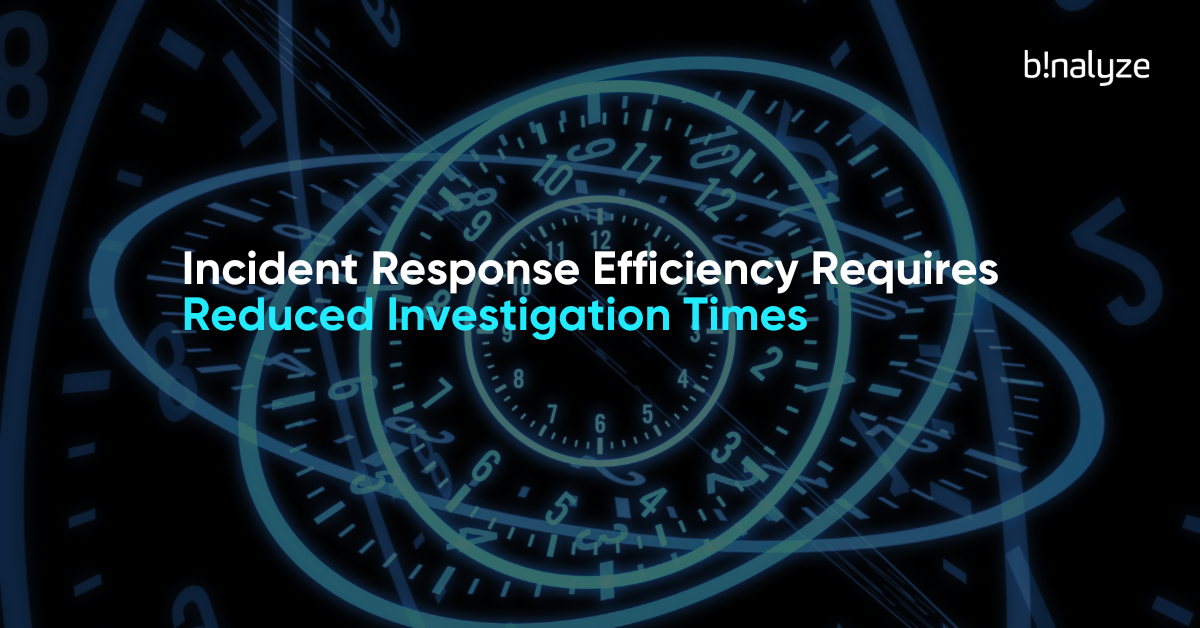2 min read
Incident Response Efficiency Requires Reduced Investigation Times
![]() Sophie Bovy
:
Thu, Mar 28, '24
Sophie Bovy
:
Thu, Mar 28, '24

In the fast-paced environment of today's Security Operations Centers (SOCs), the speed of detecting, investigating, and responding to security incidents defines the thin line between cybersecurity resilience and vulnerability. With an endless stream of cyberattacks, the pressure to minimize investigation times has become a critical challenge for under-resourced and overworked cybersecurity teams. This article explores how integrating digital forensics into incident response workflows can significantly improve response outcomes and why adopting innovative strategies is vital for shrinking the investigation window in the face of evolving cyber threats.
In today’s Security Operations Center (SOC), time is everything in an increasingly stressed and short-staffed environment. Organizations face a near-constant onslaught of attacks from cybercriminals. The ability to swiftly detect, investigate, and respond to security incidents is essential. The need to shrink the investigation window has never been more pressing, requiring innovative strategies to bolster cybersecurity defenses and ensure timely response outcomes.
The Critical Role of Digital Forensics in Streamlining Incident Response
The integration of digital forensics into incident response (DFIR) plays a pivotal role in enhancing cybersecurity measures. Traditional DFIR solutions, however, struggle to cope with the growing volume and complexity of data. This struggle is compounded by a notable skills gap in the cybersecurity workforce. Challenges such as gaining sufficient visibility into remote and distributed digital assets, overcoming integration and automation hurdles, and the burden of repetitive manual tasks significantly hinder the effectiveness of incident response investigations. Additionally, the complexities of regulatory compliance requirements add another layer of difficulty to the already intricate process.
Strategic Approaches to Reduce Incident Response Times
To address these challenges, organizations are rethinking their approach to incorporating digital forensics and incident response strategies. Key to these strategies are automation, enhanced integration, and a strong emphasis on collaboration, all of which are essential for enabling rapid response capabilities. Here’s how these strategies pave the way for more efficient incident response processes:
By automating repetitive tasks and ensuring seamless integration of digital forensics tools and processes, organizations can achieve more efficient and effective incident response workflows. Automation not only speeds up the investigation process but also reduces the risk of human error, leading to more accurate and reliable outcomes. Integration across tools and platforms ensures that data silos are eliminated, providing a unified view of threats and enabling faster decision-making.
Enhancing Collaboration in Incident Response Teams
Promoting collaboration among incident response teams is crucial for a comprehensive investigation process. Treating incident response as a collaborative effort ensures that every team member contributes their expertise towards a more effective resolution. Utilizing shared technologies and tools standardizes the incident response process, enhances efficiency, and strengthens the overall security posture. Through collaborative efforts, teams can achieve faster response times and more robust defenses against cyber threats.
Dive Deeper into Incident Response Optimization
As cyber threats continue to evolve, so must the strategies employed by organizations to combat them. Reducing investigation times through the strategic integration of digital forensics and prioritizing automation and collaboration are key steps towards achieving more efficient incident response outcomes. Organizations must continually adapt their cybersecurity practices to stay ahead of threats and ensure their defenses are as resilient as possible.
For a deeper dive into how organizations can streamline their incident response operations and effectively navigate today's cybersecurity landscape, consider exploring our latest report, "Strategies for Shrinking the Investigation Time and Complexity." This report offers actionable insights and expert recommendations to bolster your cybersecurity defenses and enhance incident response efficiency. Download the report here to get started.










